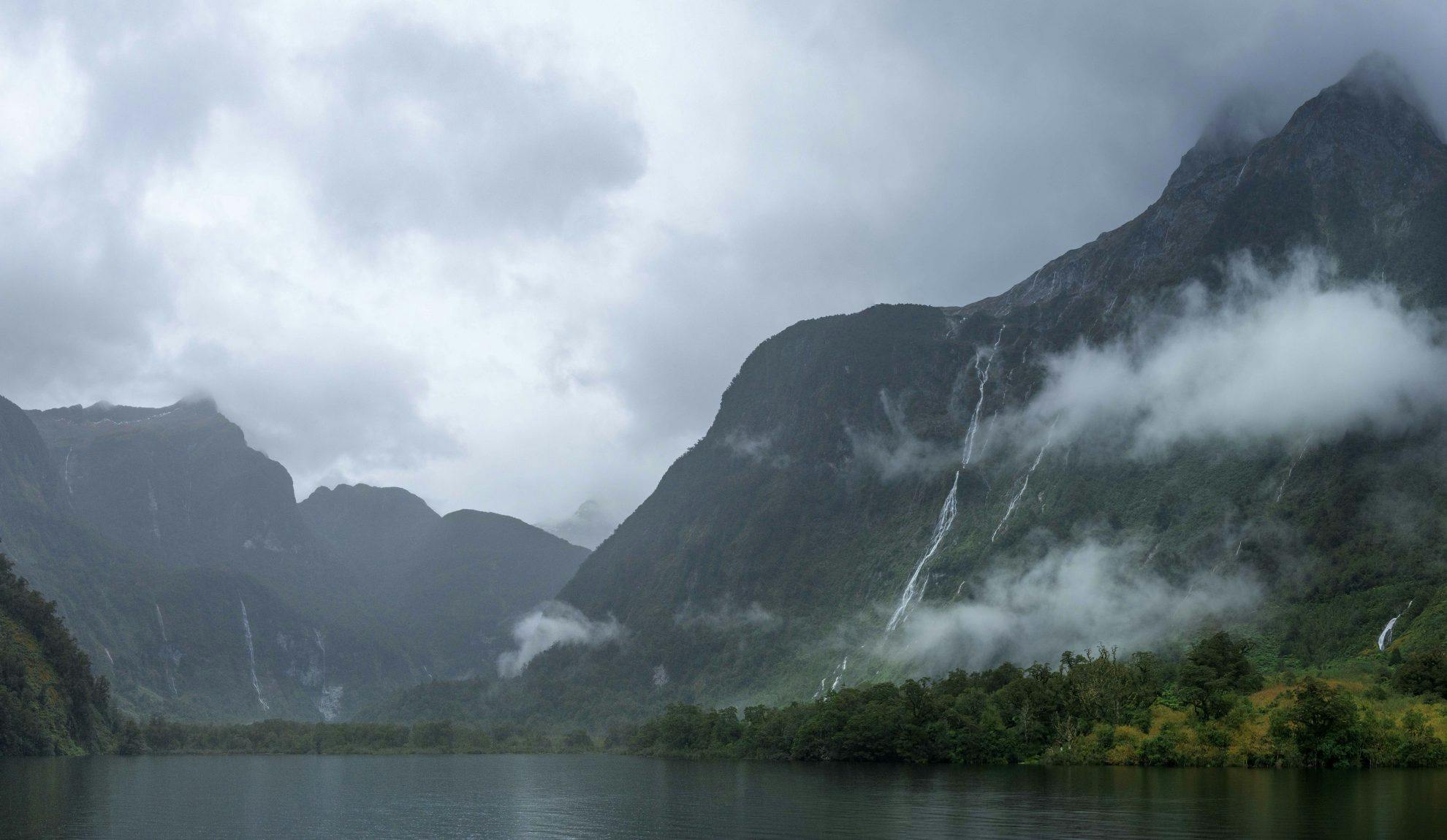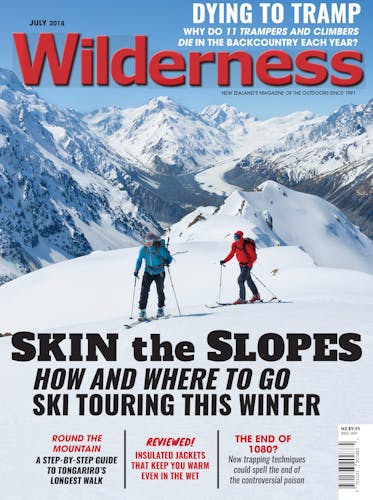There are 14 fiords in Fiordland, but these four are the ones to see.
Virtually every New Zealander knows of Milford Sound: the elegant spire of Mitre Peak, the smoking form of the Bowen Falls, the sheer-sided majesty of a valley chiselled by glaciers past and long since invaded by the sea. Its Maori name, Piopiotahi, refers to the native thrush, piopio, that flew here to mourn Maui’s death.
According to legend, Tu-te-raki-whanoa carved each of the 14 fiords in Fiordland, using his great ko, or digging stick. Beginning in the south, he worked his way north, honing his skill until he reached the pinnacle of his craft by adzing Piopiotahi.
School geography lessons taught me that a ‘sound’ is a valley shaped by a river, then invaded by the sea; for example, Marlborough’s Queen Charlotte and Pelorus Sounds. In contrast, a fiord – U-shaped – is carved by glaciers, which shaped its steep sides. It’s something of a curiosity then, that every one of these 14 fiords bears the name of ‘sound’: among them Breaksea Sound, Doubtful Sound and George Sound. Technically, maps should show Milford Fiord and Dusky Fiord, for example.
Fiord is the English version of the Norwegian word fjord. Along with Norway, New Zealand is home to some of the finest fiords in the world, which also feature in Alaska, Patagonia, Greenland and Canada. The majority of Fiordland’s remote fiords are difficult to access, but these four offer opportunities for trampers and kayakers.
1- Milford Sound
Before completion of the Homer Tunnel in the 1950s, Milford Sound was cut off to all except trampers or those arriving by boat. Even those walking the Milford Track required boat access across Lake Te Anau, and after they reached Milford Sound, had to walk back. Today, Milford Sound is one of the country’s most popular tourist destinations, where buses disgorge hundreds of people every day. Kiwis might find the place a little less crowded at dawn and dusk, which usually coincides with the best light for photography. A short walk along the foreshore leads to a famed viewpoint.
2- George Sound
One of Fiordland’s more northerly inlets, George Sound lies between Bligh and Caswell Sounds. Of all the area’s tracks, the one to George Sound is perhaps the most demanding and remote. It begins from Lake Hankinson, beyond the North West arm of Lake Te Anau, travels up the Wapiti River, over Henry Pass, and down Katherina Creek to end at George Sound. Although only 18km (one way), DOC recommends trampers take 3-4 days, which gives a fair indication of the demanding terrain, mud and track conditions. Even then, it requires water or air transport to either end.
3- Patea/Doubtful Sound
Patea earned its alternative name from Captain James Cook, who suspected it might offer a fine harbour, but was prudent enough not to chance his ship in its narrow entrance. European exploration of it was instead left to the Spanish mariner Malaspina. While Doubtful Sound may not have a mountain of such arresting power as Mitre Peak, its sheer-sided Hall Arm is rightly considered to be one of nature’s marvels. And it’s vast; the entire volume of Milford Sound would fit into Crooked Arm, just one finger of Patea. Real Journeys offer day trips or overnight excursions aboard their boats from Deep Cove, which is reached by launch and bus over Lake Manapouri and Wilmot Pass.
4- Dusky Sound
Dusky Sound is one of Fiordland’s largest fiords, a sprawling network of islands, serpentine arms and precipitous walls. It’s also the destination of the 8-10 day Dusky Track, which begins from the Wilmot Pass Road near Lake Manapouri, and ends at Lake Hauroko. Beginning in the Spey, the famously-muddy track crosses a pass to Seaforth Valley, where from Loch Maree Hut a side track leads to the head of Dusky Sound and Supper Cove Hut.








